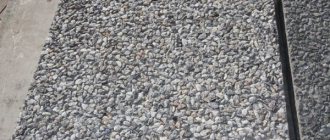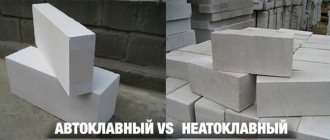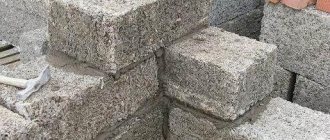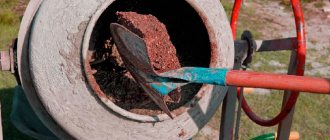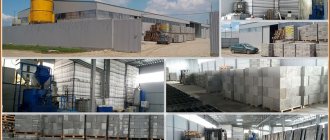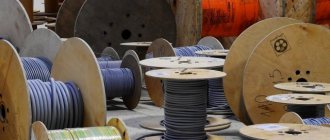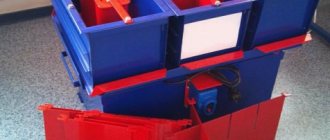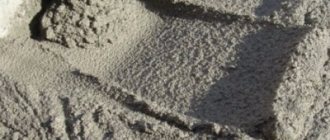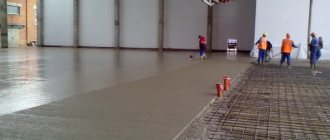During the construction of any facility, a variety of materials are used, the most popular and widely used of them is concrete. Products made using concrete have a long service life, are resistant to changes in weather conditions and temperatures, and have increased strength.
However, progress has also affected construction technologies. Today, an unusual building material has appeared on the construction market - transparent concrete, another name is litracon.
Main characteristics of litracon
The main advantage of the new material is its environmental friendliness and safety. The components included in transparent concrete do not contain impurities harmful to human health and undergo a preliminary environmental assessment.
Litracon is characterized by increased strength. One of the positive qualities of transparent concrete is its noise and thermal insulation; it is available for making with your own hands.
Litracon also has disadvantages. Production technology does not allow its production directly in formwork at construction sites. However, the biggest disadvantage of transparent concrete is its price. It is precisely because of its high cost that litracon is often used not for construction, but for design solutions, in the form of inserts or individual decorative elements.
Production technology
To produce transparent concrete, you will need special equipment in the form of a vibrating table. The formwork should be prepared in advance. The length of the fiberglass must match the length of the formwork.
It is recommended to prepare the solution in small portions. First, dry cement and sand are mixed in a ratio of 1:3. Next, clean water is added to the dry mixture, its amount is about 50% of the amount of cement.
After adding water to the mixture, the solution is mixed with a mixer for 5–6 minutes. Then plasticizers are added to the prepared solution, and the mixture is thoroughly mixed again.
After preparing the solution, it is laid in a thin layer, approximately 1 cm, glass fibers are placed on top of the prepared formwork, lightly pressing them into the solution.
The next layer is poured in the same sequence, but only after the laid out layer of mortar has “set” well. This procedure is carried out until the formwork is completely filled.
Once the entire mold is filled, the mixture is left to completely harden for about three days. Then the formwork is removed, the workpiece reaches its final condition within another week, gaining strength.
The final stage is grinding the surfaces using diamond discs to remove all roughness and give an aesthetic appearance. To mount the finished blocks, standard ready-made mixtures are used and the products are glued together with epoxy resin.
Production process
The technology for producing transparent concrete is not a complicated process.
The high cost of the material is not due to labor costs for production, but to the cost of the optical fiber included in the blocks and panels. A layer of concrete without a coarse component is poured into the formwork, then fiberglass is pressed into the solution and the layer dries. Then the process is repeated. The next layer is always poured after the previous one has set. In this way, transparent concrete is obtained: the technology for its production is not a science-intensive or labor-intensive process. It is quite possible to carry out work on the production of glass concrete yourself.
We make litracon on our own
Due to the high cost of branded material, many people try to make transparent concrete with their own hands. Technologically, this process is very simple, but there are some nuances here too. The trick is to maintain the exact proportions of all components, as well as the quality of fillers.
In addition, it is very important to observe the vector of laying the fiberglass threads.
To make block or panel glass concrete with your own hands, you need to prepare the following materials:
| dry fine cement |
|
| sifted sand without additives with fine grain |
|
| pure water, without any chemical additives |
|
| fiberglass with a diameter of up to 2 mm, the length of which should be equal to the thickness of the finished block |
|
The concrete solution is prepared in the traditional proportion of one to three. Water is added as needed, based on the mass fraction of cement, but the amount of water in the solution should not exceed 50% of the total volume.
Important! Mixing should be done carefully, for which it is necessary to use special equipment (concrete mixer), the condition of which must be absolutely clean.
The instructions for pouring blocks are as follows:
- A box is assembled from a floating formwork that moves upward;
- The first thin layer of concrete mortar is poured inside the formwork;
- Fiberglass is placed and embedded in the solution;
- The pouring is left at rest until the concrete sets.
Then the process is repeated the required number of times until the full height is reached. After the last layer of fill has set, the formwork is removed. This usually happens 48 - 72 hours from the moment the last layer is poured.
Important! After removing the formwork, the block is allowed to rest at room temperature and average humidity for 3-5 days.
The finished block is ground and polished to a mirror finish on the side of the working surface, which is perpendicular to the direction of laying the fiberglass threads. You can learn more about the process of making translucent concrete blocks yourself by watching the video in this article.
Application area of light-conducting concrete
Due to its high cost, litracon is used for the construction of particularly significant buildings. The scope of its use has no boundaries, however, most often products made from light-conducting concrete are used in the construction of stairs, partitions, and decorative inserts.
It is used to make sinks for private houses and apartments, countertops, decorative fountains and other products ordered by individuals. The fiberglass threads that make up litrakon create unique patterns.
Transparent concrete blocks can be purchased ready-made, but you can reduce the cost by making them yourself. The manufacturing technology is simple and straightforward.
Transparent concrete (11 photos)
Author: Julia
07 August 2021 11:54
Tags: transparent concrete, translucent concrete, construction work
2763
11
More than 10 years ago, experts proposed a truly unique innovative development for construction work - transparent or light-transmitting concrete. Currently, Lucem has spoken about the launch of a new material and its entry into the global construction market. And soon it will be possible to buy concrete with delivery, which will make the structure weightless. Let's remember the history and features of this material...
0
See all photos in the gallery
0
As you know, ordinary concrete began to be used in construction more than a thousand years ago, back in the days of Mesopotamia. It acquired its final form in the 19th century. And nowadays, during the construction of any building, it is simply impossible to do without the use of concrete. It is rightly called the basis of modern architecture, since it is an essential structural component of any building. There are even polystyrene concrete and fiber cement. However, many people associate concrete with facelessness and soullessness, and rarely would anyone think of calling it beautiful. However, after the appearance of a transparent variety, ideas about concrete begin to change greatly.
0
It would seem that builders have long studied all the chemical and physical properties of this material. But the fact that through the transparent indestructible mass one can see the silhouettes, features and colors of the objects that are behind it, few people suspected. At the same time, the transparent material remains sound-heat insulating, durable and water-resistant. Thus, this is a type of composite concrete that transmits light through itself, while remaining the properties of ordinary concrete. Transparent concrete is designated by another term - lythrocon. There is another name - lyutsem. The creator of transparent concrete is Aron Loshontsi. It was he who came up with the unusual idea of combining concrete with optical fiber, which is used in telecommunications. The first sample of concrete, which the inventor himself calls translucent, was made in 2001.
0
Now this Hungarian architect has opened his own company and is now producing transparent concrete in huge volumes. In the new version of the lyutsem, the architect used plastic, which made the material somewhat cheaper and made it significantly more attractive. The architect's dream is to one day see city blocks built from litracone. A unique feature of light-conducting concrete structures is the fact that they are made of fine-grained material with the addition of fiberglass. When these 2 components are combined, a unique building material with a high level of transparency appears (it will change the perception of concrete as an ordinary and boring material upon external inspection).
0
Light-conducting fibers are located in the structure of concrete; they make it possible to achieve a striking play of light and shadow. Such concrete blocks are not completely transparent, however, the silhouettes of various objects and people are clearly visible through them. Structures made of light-conducting concrete look light and airy. However, according to experts, in terms of its most important characteristics, light-conducting concrete is no different from its simple counterpart - it is also durable. Researchers have found that light through transparent concrete is visible at a distance of more than 20 meters. The blocks are made by layering fine-grained concrete onto optical fiberglass. After this procedure, the surface of the block is treated in a special way. The fibers are small in size, which makes it possible to maintain the homogeneity of the concrete mixture and its internal structure. This advanced material, along with conventional concrete, has significant strength, high fire and frost resistance, and is resistant to exposure to sunlight.
0
Transparent concrete immediately found its application and became common in various countries. In the USA, as a rule, it is used for the production of fencing for many government buildings. In Sweden and Japan, very monolithic buildings are built from such material. Lutze became the main material in the construction of the central representative office of BMW, the famous automobile concern. In addition, small objects began to be produced from transparent concrete. Today, lamps made from litrakon are quite popular. Such an accessory weighs a little - only 10 kilograms, but costs a significant amount - about 600 euros for each lamp.
0
To present the innovative material in detail, the developers clad the central façade of one of the buildings in Aachen. To cover the external walls, 136 panels were used, the dimensions of which corresponded to 150x50 cm. The concrete panels were connected to a lighting control system and controlled using innovative computer technologies. The unique system controls over 16 million flowers. As a result, the ordinary facade of the building turned into a huge screen for a bright light show. From the point of view of the authors of the project, the emergence of new transparent concrete blocks on the construction market will increase the potential of the modern art of interior design and architecture. Lucem has already begun producing rare blocks, producing them in several varieties.
0
0
0
0
Source:
Tags: transparent concrete, translucent concrete, construction work
Did you like the post? Support Chips, click:
33 5 28
Liked
28 3
13
Partner news
